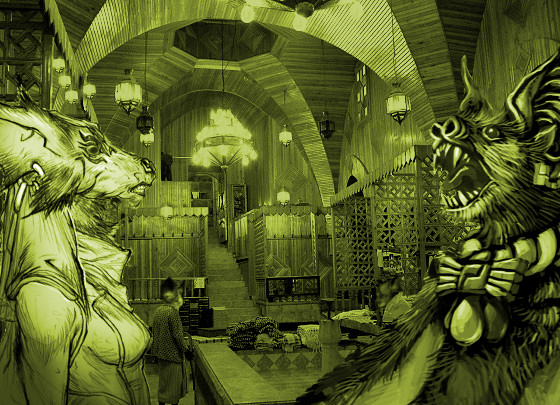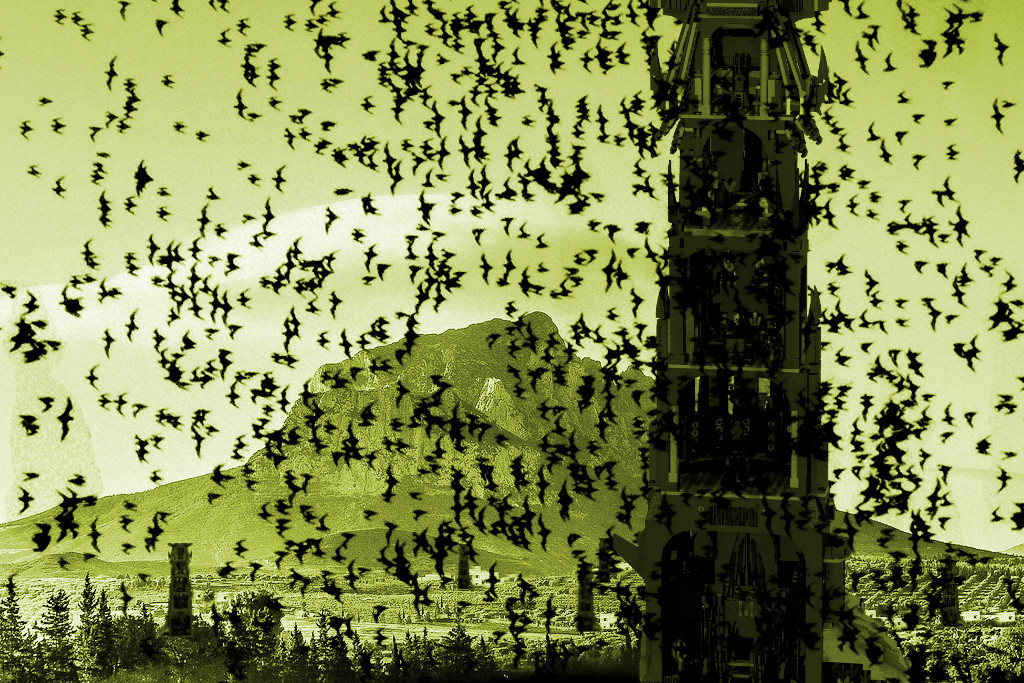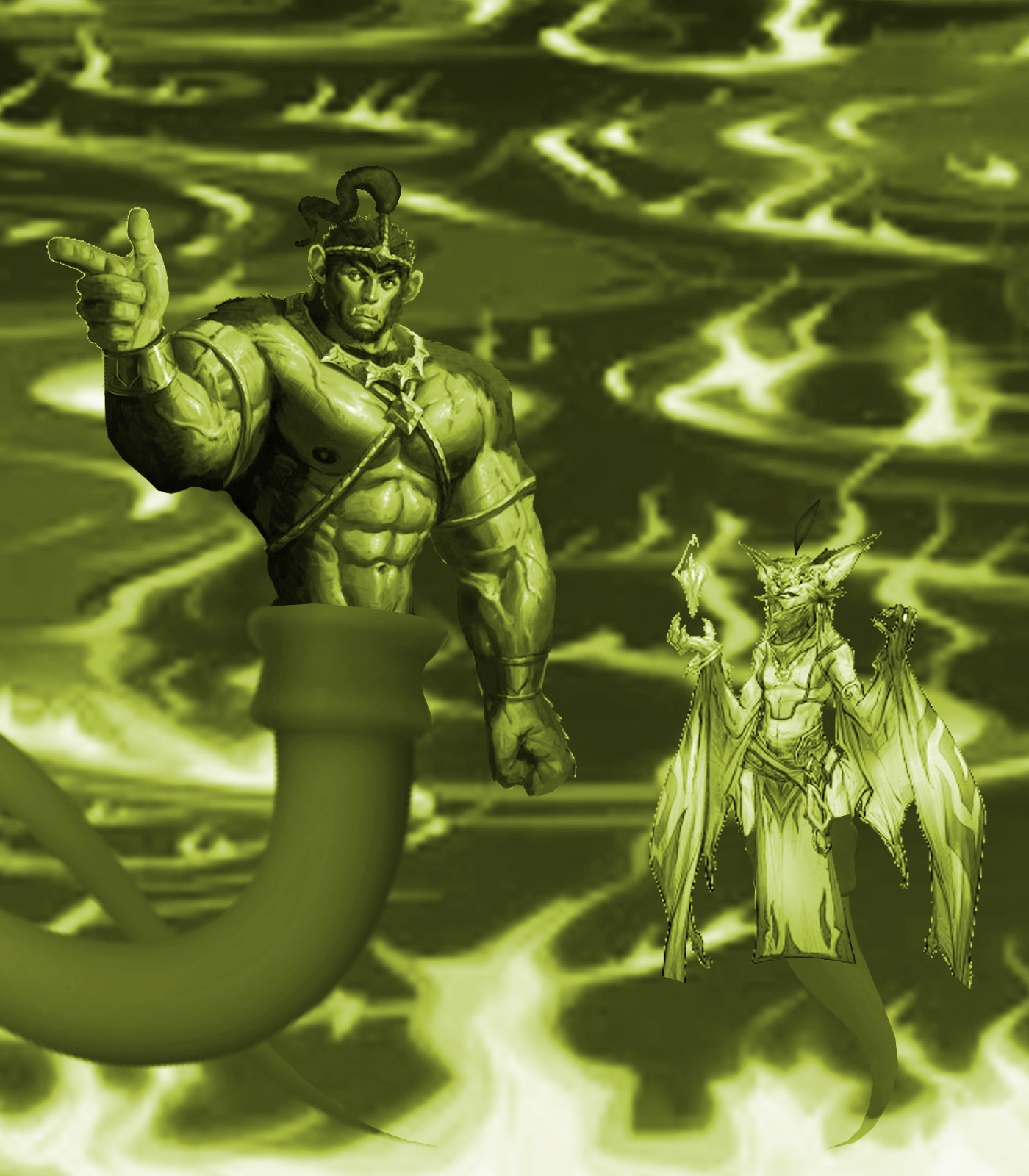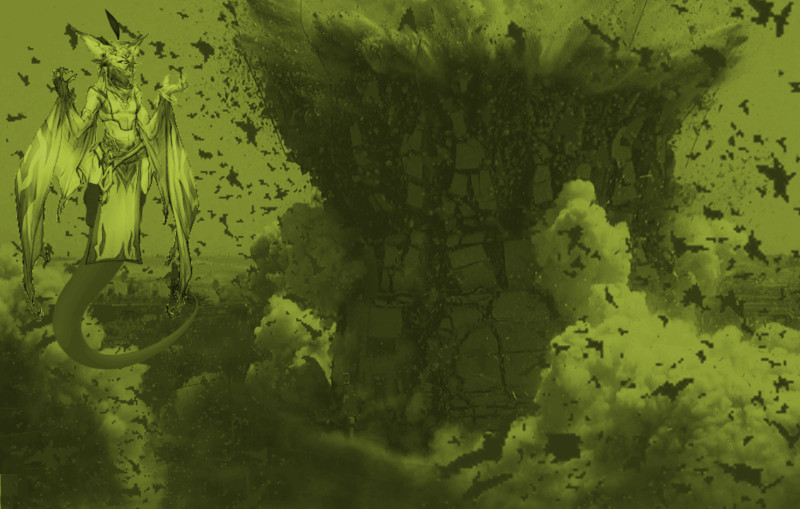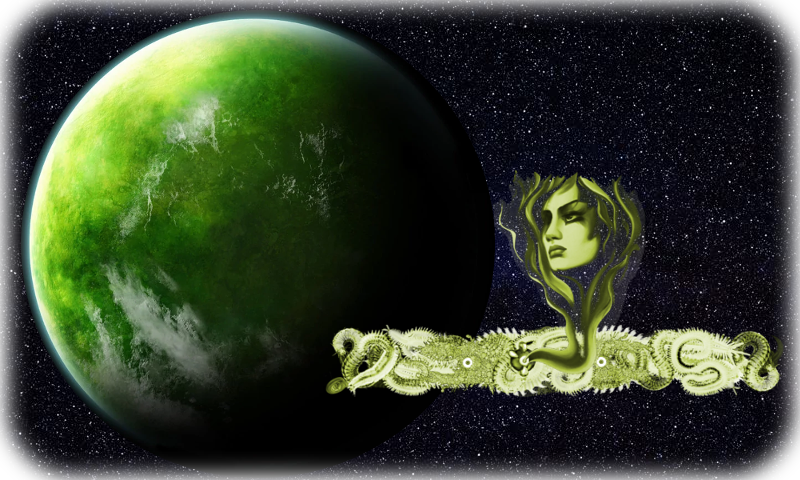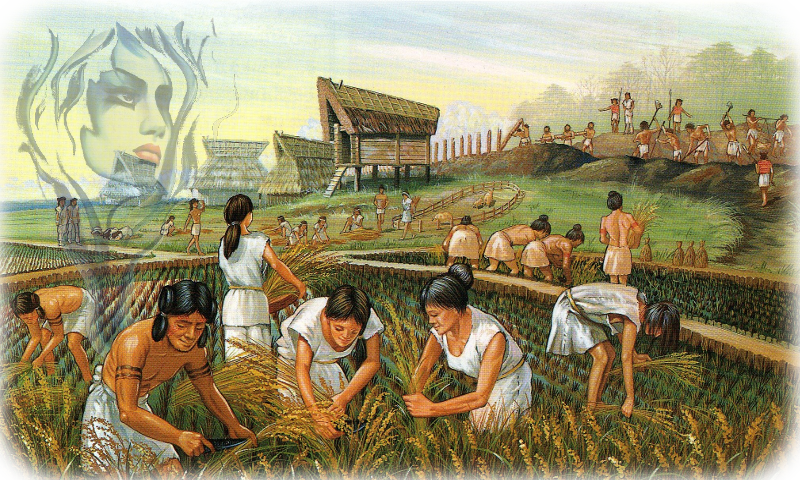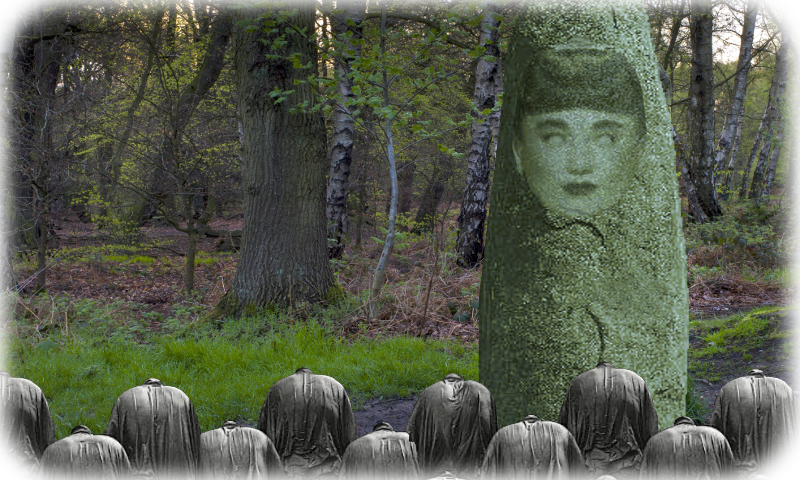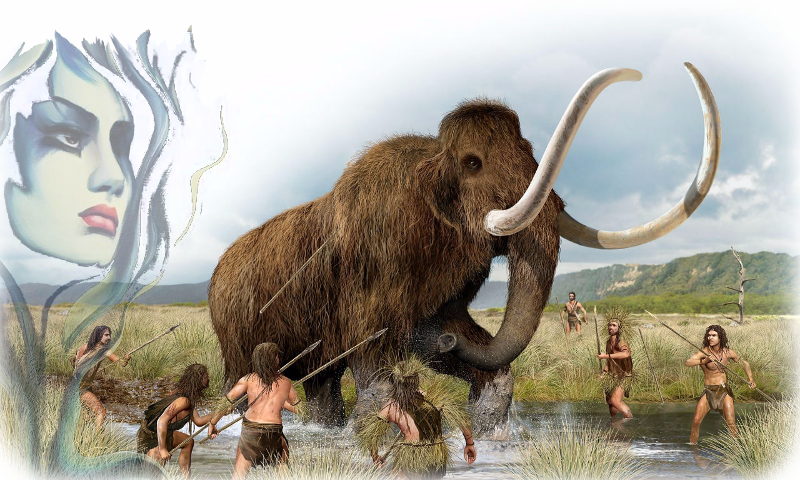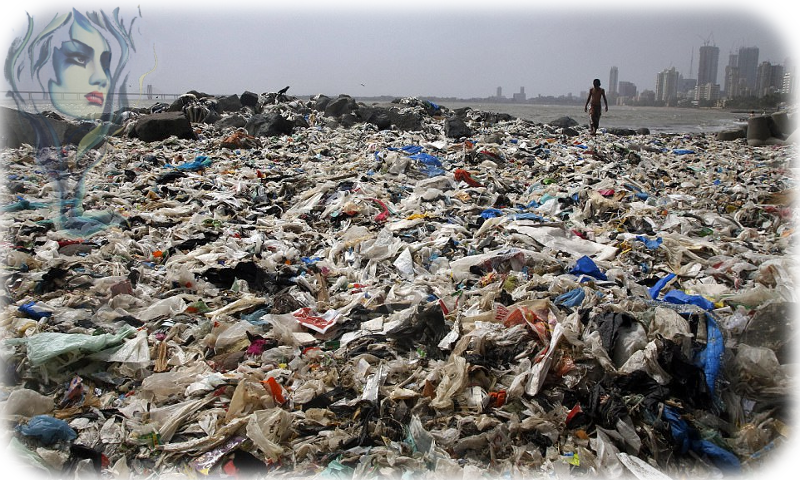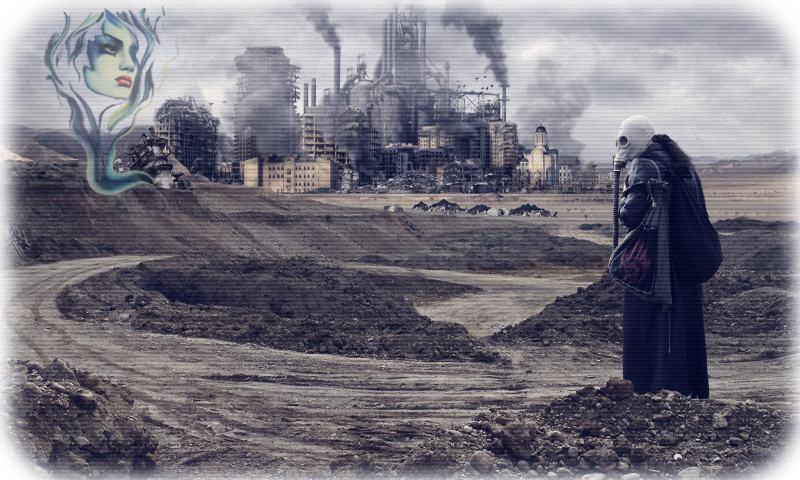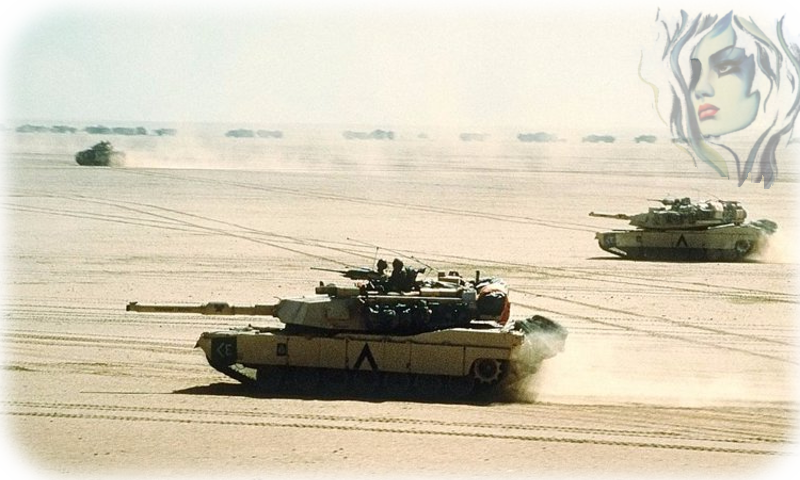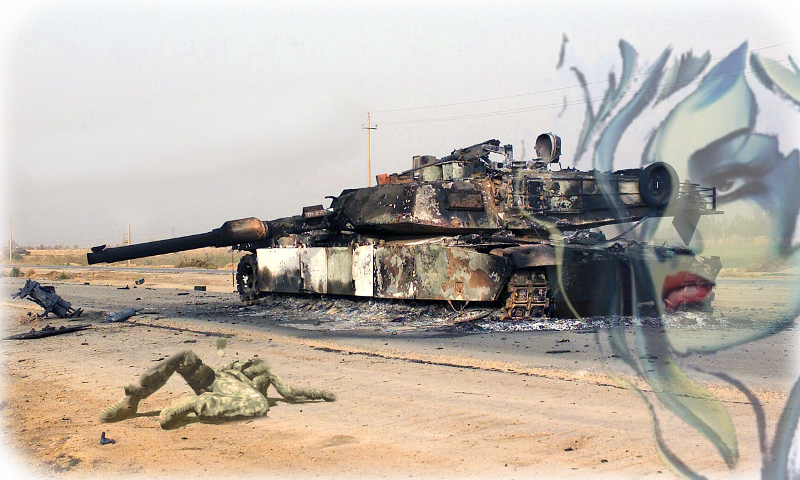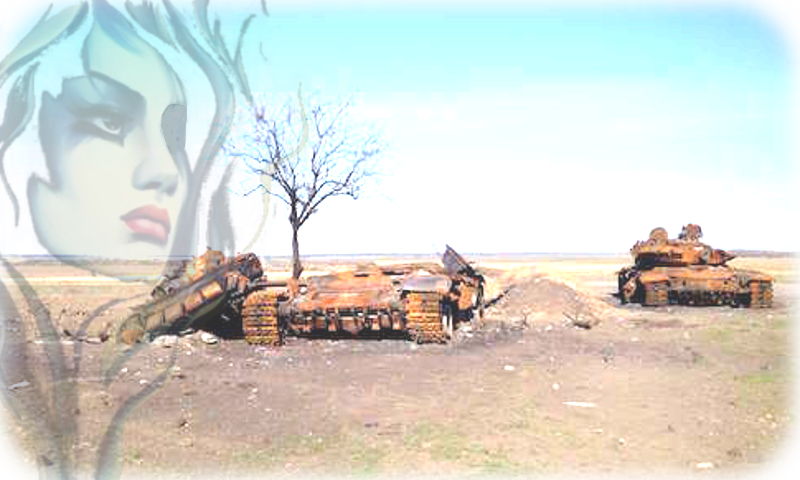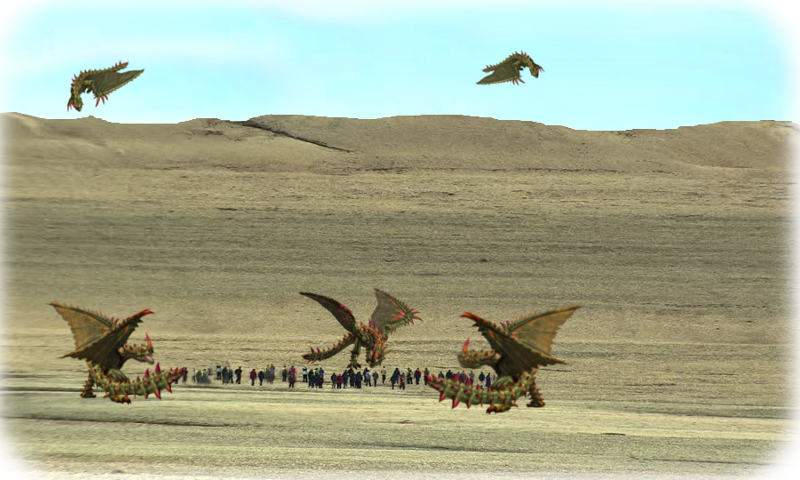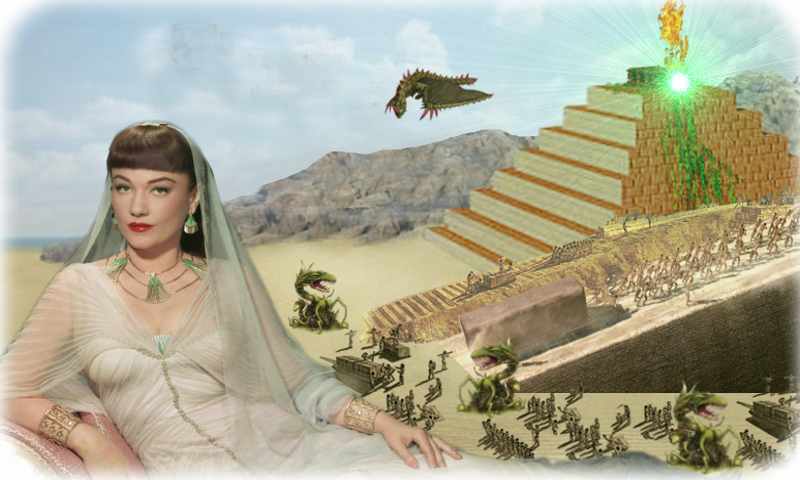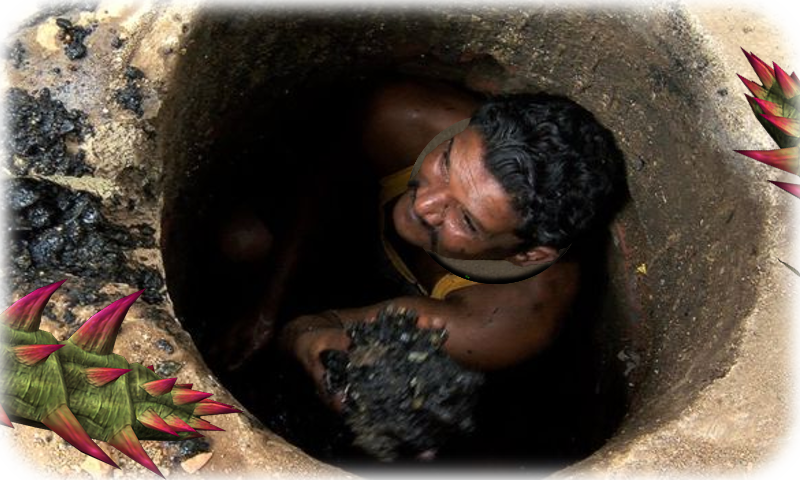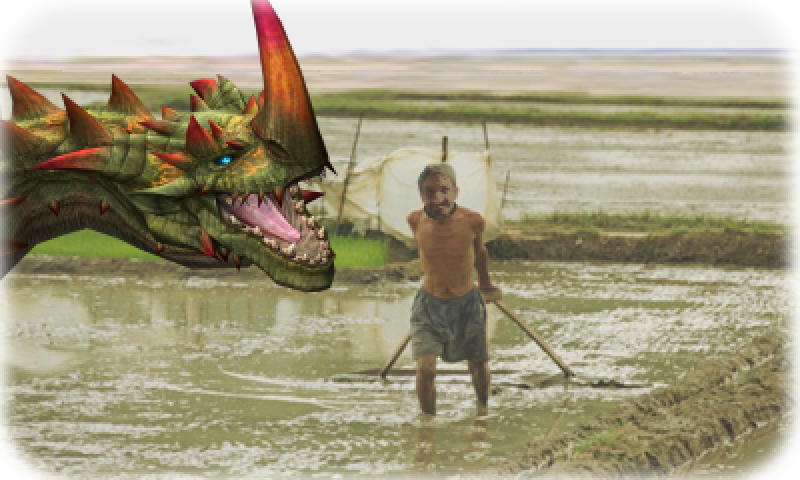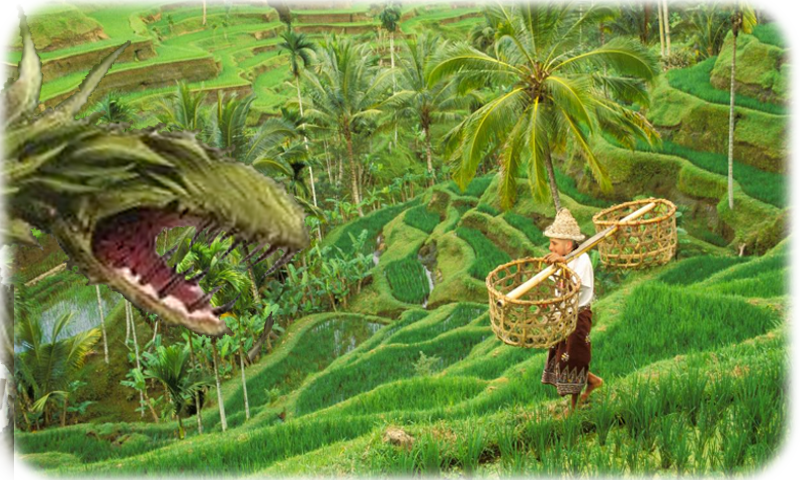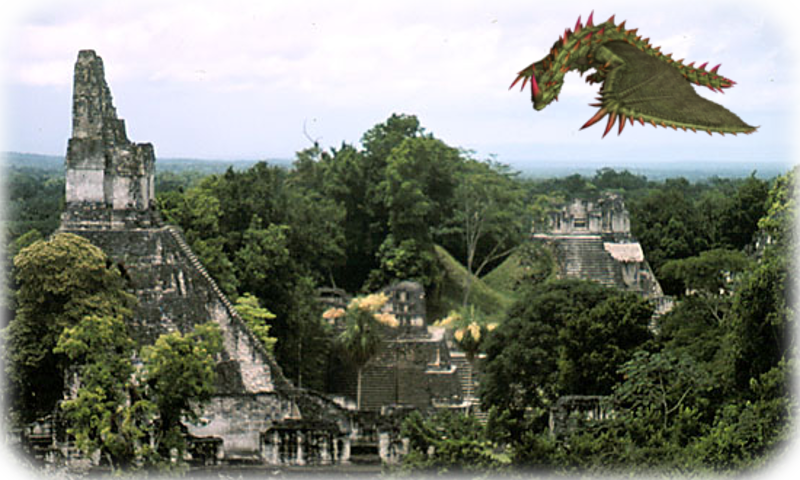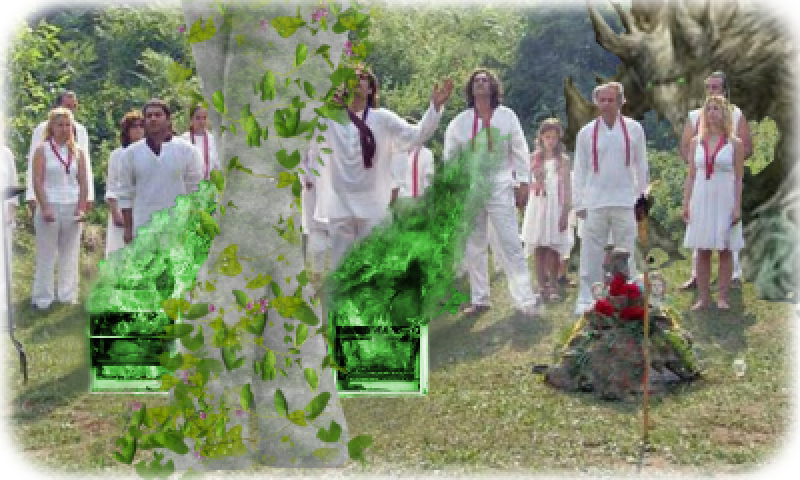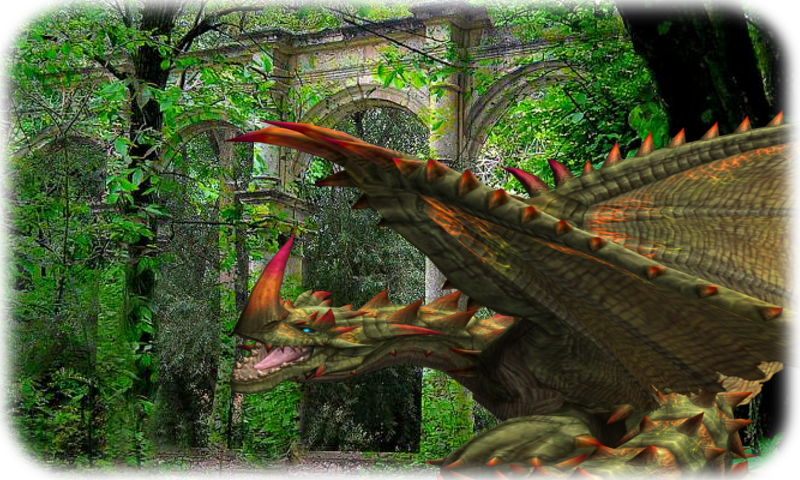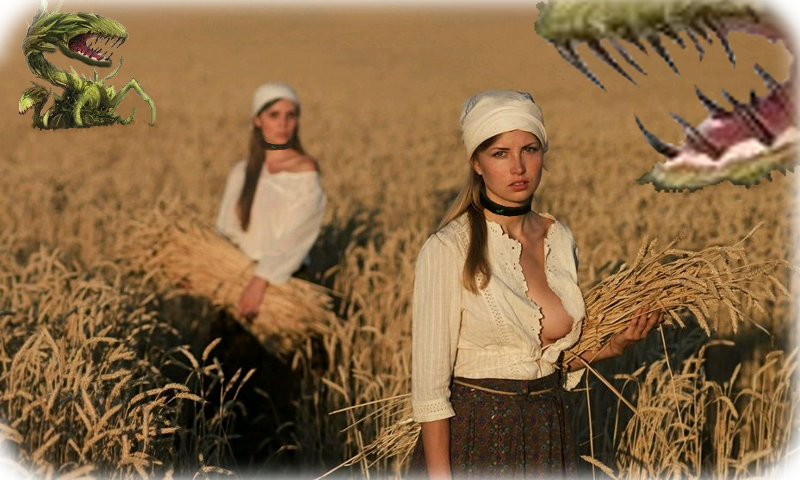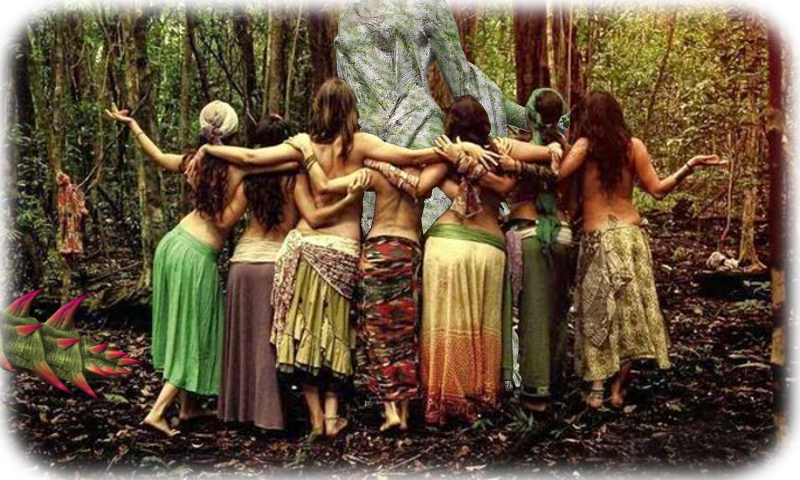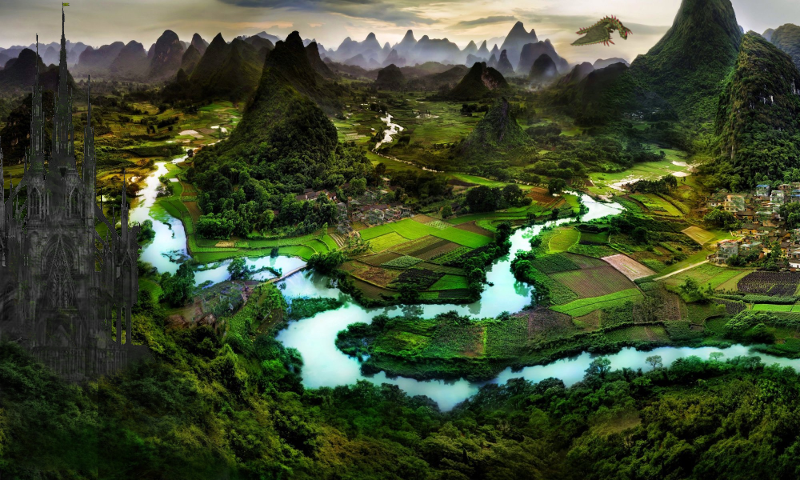
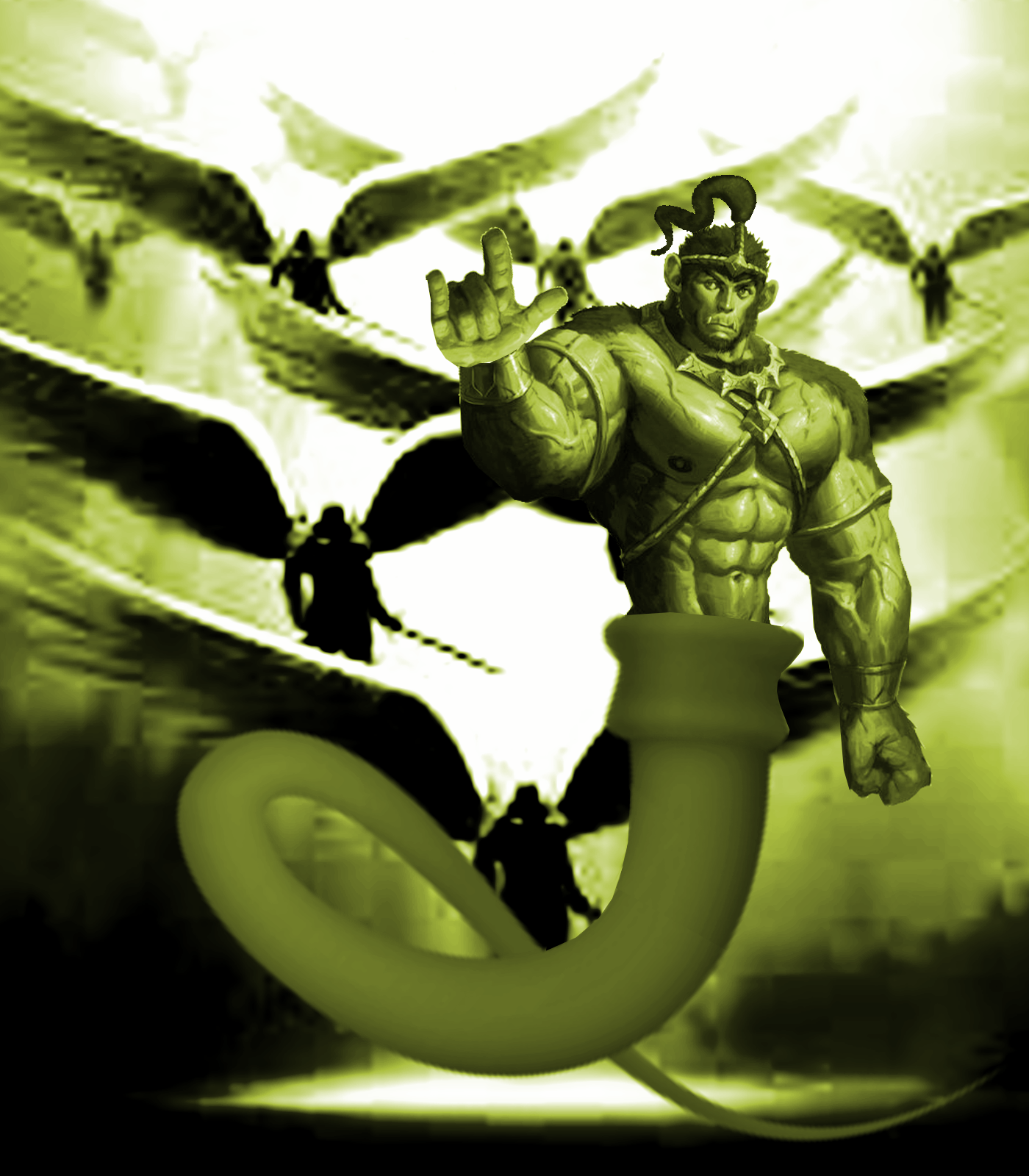 An epic clash exploded on the Earth over 30 million years ago: the powerful Jinish (1) were created to cleanse this world from an alien race of powerful Chirapters Wizard (2) that was corrupting it. The powerful forces of the two blasts burned the earth in such ancient times, reaping millions of victims. The Heretic Wizards and their people suffered total ruin together with their cities: millions and millions of Chirapters were turned into dust and only very few succeeded to escape luckily: some through fortuitous spatial alignments, others hiding in the most remote caves of the Earth and preferring an interminable exile of hibernation respect the fate imposed by powerful Jinishs. On the other hand, the same Jinishs, the powerful immortal demigods who were winners, counted huge losses confronting the Sorcerers and their immense flocks capable of commanding the occult powers: many were victims of incurable wounds, others terribly mutilated, others were imprisoned in lost intradimensional places of eternal desperation without hope of escape or return. Of the past presence of the Chirapters everything was canceled, there only remaining were few specimens of the Dizzash (3), their companion animals, escaped in the mountains from the black towers before their destruction, even if these bats were destined to be extinguished rapidly.
An epic clash exploded on the Earth over 30 million years ago: the powerful Jinish (1) were created to cleanse this world from an alien race of powerful Chirapters Wizard (2) that was corrupting it. The powerful forces of the two blasts burned the earth in such ancient times, reaping millions of victims. The Heretic Wizards and their people suffered total ruin together with their cities: millions and millions of Chirapters were turned into dust and only very few succeeded to escape luckily: some through fortuitous spatial alignments, others hiding in the most remote caves of the Earth and preferring an interminable exile of hibernation respect the fate imposed by powerful Jinishs. On the other hand, the same Jinishs, the powerful immortal demigods who were winners, counted huge losses confronting the Sorcerers and their immense flocks capable of commanding the occult powers: many were victims of incurable wounds, others terribly mutilated, others were imprisoned in lost intradimensional places of eternal desperation without hope of escape or return. Of the past presence of the Chirapters everything was canceled, there only remaining were few specimens of the Dizzash (3), their companion animals, escaped in the mountains from the black towers before their destruction, even if these bats were destined to be extinguished rapidly. In any case, at the end of that rapid and excruciating war, the Jinishs were left free to live in peace and move between the Earth and other dimensions. Therefore, they had to declare their submission to their creators, the Chthonic Gods (4) and to serve as watchers of this world to prevent the emergence of other heresies that distort the space / time and compromise its precious resources. In addition these creatures, powerful though lacking the gift of foresight, capable and eager to reproduce themselves, were forbidden to couple both with each other and with the other creatures of the Earth, since reproduction could generate aberrations.
However, many veterans of the battles were now accustomed to the ecstasy of war, poisoned by incurable wounds or by the loss of their comrades. Their faith in the Chthonic God was compromised up to the point that they required to be free to follow their own destiny: a claim born among the faithful ones, led by Harital, the Fair (5), supreme leader of the Jinish armies and the rebels. The rebels were often divided among themselves and initially limited their requests just to freedom and new rights, plus they demanded rewards for their war sacrifices. Therefore Chthonic Gods did not accept such irreverence from their own creatures and ordered Harital, the Fair, to take care of a quick and and severe punishment for all the rebels. The ensuing clashes lasted for many millennia, through the folds of space between dimensions and on the primitive Earth. Harital, the Fair, had advantages: first his own unsurpassed force, but also the great number of the bravest warriors that decided to follow him, plus the solid and common unifying faith in the Chthonic Gods. However, there were many brave Jinishs among the different rebel groups, often headed by powerful warriors: Rijatal (6), the Flamboyant, was one of them. He was an hero who alone had wiped out two microcolonies (7) of powerful Allied Chirapter Wizards. Riijatal had escaped their most powerful spells and their intradimensional bubble cages, bravely standing under a storm of thunderbolts that had put all other Jinishs to run, just to shot very hot flashes capable of igniting the endless fluttering Chirapter Flocking up to many leagues away. Rijatal incinerated them all along with their black towers and their crops. His legend was strong among all the Jinishs and when he refused to fight his brothers and turned to be a rebel, many other ones joined his ranks.
Rijatal, the Flamboyant, claimed the Earth for himself and his followers as a reward for the actions of war and confronted himself with Harital, the Beautiful, over what would become the central Mediterranean. Many Jinishs believed that the Rijatal’s requests were legitimate, but in the end the most sided with Harital, the Fair, for fear of the Chthonic Gods, leaving just few warriors in the ranks of his rebels.
At the end from the side of Rijatal, the Flamboyant, only a few hundred faithful friends remained, even though brave warriors. When the two sides confronted each other, due to the rebel past merit and the courage, Harital, the Fair, offered the old brother in arms a last chance to repent and be forgiven. Rijatal, the Flamboyant, was disdainful of the offer he considered melancholy; he laughed and then hurled himself, first among the first, against the enemy lines. The battle was conducted on the edges of a huge volcano erupting above the sea surface, the torn bodies of many warriors fell into the depths of the earth, were enveloped by magma they fell destined to experience an endless suffering as relics of such immortal flesh. Soon the rebels were completely surrounded and the surrender was required. Most of the survivors subdued themselves and were confined to a dimension destined to imprison them forever, along with other rebel groups; but Rijatal, the Flaming, with the last faithful, managed to escape through a secret passage in the quarries of the volcano. From these dungeons he managed to reach, thanks to his powers, the hidden caves that he had prepared under the city of Rashas (8). The Jinishs devotees to Chthonic Gods began to call Rijatal, the Disdainful, precisely because of his act of indignation against the generous offer of Harital, the Fair. In fact, they considered him the prime cause of the ruin of so many brothers, his followers; on the other hand, the faithful at Rijatal saw in him more than ever a valiant hero, and they, together with himself, were very proud to use this new epithet.
The faithful Jinishs continued to watch over the Earth and chase both the Chirapters and the Jinish Rebels for millions of years. Meanwhile, the ban on couplings was going to ignored several times; this was happening among rebels as well as faithful Jinishs, even if it was more rare in such second case. The coupling led to the creation of new creatures often endowed with limited powers: these were called the "illegitimates" and were kept hidden from the confreres and Gods. This was happening, not only because were fruits of forbidden acts, but also because their nature was often so abhorrent that frequently the parent himself had to suppress them, since birth.
In addition the rebels followers Rijatal, the Disdainful, continued to conduct occasional raids and ambushes against the faithful Jidishs; so much so that he even managed to seize, in some occasions, some vibrating elements (9), mutating them into sources favorable exclusively to his own power. Rijatal, the Disdainful, was used to mock the faithful Jinish by saying that they had weakened and often insulted the Gods themselves, mocking their impotence against him and his followers.
In reality, Harital, the Fair, never wanted to use his strength to flush out the old comrade, that was a war hero and at the same time a rebellion promoter. Towards him, Harital felt an inner sense of guilt generated by having tortured and dispersed so many of his unfaithful brothers as required by Chthonic Gods, although he understood their claims.
Harital, the Fair, secretly tolerated the presence of Rijatal, the Disdainful, and limited himself to containing his raids. This situation led the Chthonic Gods to recall Harital, the Fair, and all his army and to reduce their visits to Earth, practically transferring them to another dimension.
Rijatal, the Disdainful, considered this a glorious victory in his battle against the Chthonic Gods and the Faithful Jinishs.
So he was then renamed by his followers: Riblis or the Flouter (10).
The surviving rebels on Earth were much freer to roam, despite having to to hide from the occasional expeditions of the faithful Jinish. At this time the couplings intensified even if, as mentioned ,the offspring generated consisted of such aberrations that the fathers themselves were usually forced to suppress the newly born illegitimates. However, Riblis successfully impregnated some primordial protobeast, taking their shape and mating with them: He succeeded in making them give birth to his Hounds, huge demonic mastiffs with black fleece and poisonous bite that showed loyalty to their creator and were left alive; yet they were so voracious and violent that Riblis had to lock them up to prevent them from exterminating too many other creatures on Earth. The Hounds were used to protect from potential intruders the secret places where the Jinishs were used to store the relics of the mutilated companions since the end of the War of the Heretic Wizards.
During the rebellion, He and the other Jinishs set up new secret places protected by powerful spells in order to preserve and protect the surviving relics of old companions and to make them rest in peace. In fact, Riblish discovered that the amniotic liquid of illegitimates, where they could be kept alive, turned out to be a powerful magical substance capable of incarnating obscure evil. The rebels used to store the relics of their companions, in secret places, inside small pools, full of this substance, impregnated with spells capable of acting against anyone who wanted to violate them.
In the millenniums to follow many other Divinities and Celestials went down to visit the Earth; often they were Entities interested in the planet different resources, but Riblis, the Flouter, and his followers, considered this world their own property and left no room for those who were ostentatiously demanding.
Sporadic little fights with faithful Jinish patrols in exploration or with other creatures followed for many millions of years, but surely the first important event was the mythical confrontation with Szhhre (11), herald of Outer Gods, powerful divinities coming from external dimensions to those common to our multiverses.
The herald, appeared in the guise of a flaming column, lit a flaming ring in the sky capable of embracing the entire globe and diffusing by it heavy radiation to purify the planet and prepare it for the advent. However, Riblis, the Flouter remained undaunted before that power. Indeed, He flew through the ring of fire and then land dramatically in front of the Herald. By flaunting his power, Riblis hit the ground with his mallet: by this single shot he generated a shockwave able to destroy an immense forest within six leagues, leaving in its place an immense smoking crater: Szhhre was impressed and left the Earth informing the Outer Gods of the power of the Flouter
In following years, Riblis and his followers then clashed with a Space God, anthropomorphic giant acting as world devourer; the confrontation unleashed immense powers and Earth was devastated by explosions similar to those on sun surface. Many of the followers of Riblis were destined for an existence of infinite pain, reduced to tiny patchy spot of matter unable to regenerate themselves too small to be found and placed in the pools. The Space God, however, suffered such damage as to prefer to withdraw from his claims on planet Earth and continue searching for other worlds.
In more recent times, about 9 million years ago, the Flouter dispersed an immense horde of war machines driven by powerful shapeshifters originating in the Andromeda galaxy; these, followers of the unmentionable cults of Sgursh and Klybish (12), claimed the possession of the Earth to feed their metaphysical weapons with its resources. The horde was successfully rejected by Riblis, Flouter although other comrades were mutilated.
However, when the spatial alignments were favorable, the Ancient Gods and their succubi reappeared on Earth and they acted to claim their dominion over it. Starting from the depths of a remote region of the ocean, they observed Riblis and his followers and prepared their plots: the Ancient Gods possessed a secret stone fortress, founded in previous eras, where the succubi took care of them and worship their power. It was the Ancients who sought out Riblish and his followers in the hollows of their caves under the city of Rashas and unleashed the clash. It all began with the incursion of a horde of succubi: anthropomorphic creatures covered with tentacles, over 12 feet tall, skilled in the use of powerful spells of fire, air and steel as well as being able to exploit the folds of space to move. The surprise attack in the caves allowed them to capture some Jinishs and transport them to the distant fortress.
The Ancient Gods imprisoned and dismembered the Jinishs, nailing them to stems of cyclopean basaltic material and tormenting their immortal flesh with immeasurable cruelty. More raids were conducted and other followers of Riblis were captured. Changing shelters and adopting new defenses was mostly ineffective against this powerful threat, while the lightning and hot flashes often proved effective in confrontations against the succubi. However. The succubi ability to detect and attack by surprise, reaped several victims and other followers were captured and taken to the fortress. Much time was needed to find out where the succubi came from and who they were. It was, in fact, only after numerous new raids that Riblis and his men managed to secretly pursue them through folds of space, partly thanks also to the flair of his Hounds. Riblis finally arrived at the gates of the submerged fortress and secretly observed his impressive defenses and the same Ancient Gods.
These deities appeared in many forms, often abstract and changeable, as well as difficult to perceive in those depths as well as in the physical space, in which only a small part of their true essence emerged. They often appeared in the form of organic coacerves with numerous eyes, claws and pseudopods. At other times the forms were those of anthropomorphic hydrocephalus giants, covered by adhesions and tentacles. They moved slowly in the depths and below them, between the walls and towers of the submerged fortress, countless rows of different-shaped succubi served and adored them. The succubi were dedicated to mysterious and incessant activities in the towers and walkways of the Fortress. Many of these creatures were similar to the anthropomorphic succubi seen during the suffered incursions, while others were instead huge cnidarian anthozoa withs thousand venomous tentacles, others still swam with shapes similar to fish or cephalopods.
The sight of what had been the companions captured in the raids, now reduced to shreds of immortal flesh, nailed on the carved stems and tortured without posing, was horrendous and unbearable.
Riblis decided to use an artifice to put an end to that abomination: he generated a huge underwater eruption that filled the waters with debris and generated a tremendous earthquake capable of forcing the succubi to care for the infrastructure and to distract the Ancients Gods. With a stroke he introduced himself with the shape of a giant squid between the towers and freed the still pulsating meat, obtained by the mutilation of his companions, carrying them away as relics of his followers. In the breakaway, Riblis found himself facing an Ancient God, appeared in the form of a giant octopus, he soon discovered that while his occult powers were practically ineffective against these powerful Deities, they could upset reality with incantations that exceeded his understanding. However, Riblis managed to escape him and save the relics; after the escape he placed them in the pools of amniotic liquid in secret shelters.
Even if there was no certainty if those places were actually safe, and nobody really knew the abilities of the Ancient Gods to discover and violate them, however these places were the only hope. In fact these shelters had managed to escape both the Harital’s patrols and the sight of the Chthonic Gods in the past. Soon the conflict raged again: the attacks against the fortress were useless and the Jinishs had to find new hiding places to avoid recurring incursions.
The Jinishs learned to change shelters with the right frequency to escape the succubi and use Hounds to prevent attacks, but the losses, even if contained, continued.
The Flouter therefore required his last few followers to withdraw elsewhere and to hide, fearing that they would be destroyed by the immense power of the new enemies; they accepted with the commitment to preserve his memorial and that one of other comrades.
At that point, Riblis continued by himself to ambush the succubi and set up diversions against the Gods, always managing to escape at the last moment. This continued for years and years and culminated, finally, in the realization of its secret plan, prepared since long time, to deviate a huge asteroid for crashing it into the ocean. above the fortress, generating an immediate vaporization of the water, an immense shock wave and the destruction of that region. The fortress survived the event, even if it was heavily damaged, and the fearful Ancient Gods retreated to the ruins, calling back the succubi. Riblis stood before the walls of the fortress to observe the scene and mock the Ancient Gods. Taking advantage of the situation, and with a coup, he managed to steal many of the remaining relics nailed to the stems and bring them back to rest in the safe places of the Earth.
Shortly after this great success, however, one of his hiding place in the desert used to dwell periodically was discovered.
Riblis found himself surrounded by rows of succubi. He faced these forces and reaped them with fire and sandstorms, however he was caught behind by an Ancient God in the guise of an anthropomorphic giant. This Powerful Deity imposed chains and then threw a tremendous curse of non-existence that confined Riblis into a prison in the folds of the universe. Some parts of his immortal body, feet and hands, were instead amputated and transferred onto the sacrificial stalks of the submerged fortress to undergo the interminable strain as decided by Ancient Gods. However, on the burning sand of that battlefield remained some tiny shreds of his flesh still pulsing: his followers, acquaintances of his fate, succeeded, days later, to secretly transfer them to the sacred places before returning to hide in their shelters.
The legend says that the followers, even without his guide, succeeded after millennia to steal from the underwater fortress the mutilations of Riblis preserved over there; the enterprise involved considerable losses even among the last of his companions, but allowed the relics of the Disdainful Warrior to rest in the peace on the secret places. Shortly thereafter, the Ancient Gods disappeared and the raids of succubi ceased, while the underwater Fortress lay in the deep inactive and forgotten for many more millions of years. Despite the curse of non-existence, thanks to the liberation of its flesh and the survival of some of its followers, Riblis's memory could survive and maintain a minimum level of self-awareness.
So, as soon as a new form of anthropomorphic intelligence appeared on the Earth, Riblis’s followers influenced the primordial phases of development, promoting the birth of new civilizations near the secret places. Through weak and occasional demonstrations, kept secret due to fear of the reappearance of Chthonic or Ancient Gods, it was possible to communicate with some chosen men and promote the establishment of a Cult, in which the devotees were rewarded with gifts and the enemies were punished. Good rains and tremendous storms were granted in exchange for ritual sacrifices. Riblis thus maintained a minimum residue of active consciousness capable of communicating, through the very few surviving followers, with human sensitives. These soon became the priests of a secret cult, named after the Disdainful and its glorious deeds. This cult was kept secret being opposed by almost all other religions. Indeed there are just few millennia that separate us from that days.
Along all this time frame the human followers of the Riblis’s Secret Cult collided with followers of other deities, while remaining in the shadows, for the power and glory resulting from the control of obscure powers. Perhaps one day the last survivors among his fellow Jinishs, with the support of human followers, will be able to undo the spell and bring it back to life on Earth.
Note:
-
(1) Jinishs: creatures generated by magma thanks to the powers of the Chthonic Gods; they are often assimilated to the Jinns of Islamic culture, to the Genies known in Western or to the Angels themselves
(2) Chiropter Wizards: Warlocks of an hypothetical alien intelligent race similar to big bats that would have installed a Colony on Earth, over 30 million years ago
It is said that they controlled the occult powers through propitiatory rites and that the Earth Colony had fallen into heresy during the so-called Chramak period, marginalization
(3) Dizzash: also known as Dizzya, a type of fossil bats, extinct in the Eocene that were found in the current area of Mount Chambi in Tunisia
(4) Chthonic Gods: Mythological Gods of underground of which practically nothing is known except names and epithets, according to some researcher they are similar to shamanic entities present in the archaic age: Gomuna with Chera (Roman Greek archaic deity), Frenosha with Feronia (Etruscan divinity), Thenkish with Etna (Eurignazian divinity), Angesh with Angzia (Osca divinity), Caprush con Cupra (divine entity picena)
(5) Harital, the Fair: Supreme Leader of the Jinish army, by some assimilated to Azazil, also called Al-Harith, Jinn, the pious and beautiful, in Islamic culture
(6) Rijatal: Jinish rebel, originally known as the Flamboyant, then as the Disdainful and finally called Riblis the Flouter; according to some minor theory it can be assimilated to Agni, Vedic deity of Light and Fire
(7) Witchcraft Microcolonies: the heresy perpetrated by the Chirapter Wizards led to the creation of Microcolonies among the Black Towers that populated the surface of the Earth
(8) Rashas: mythical city state of the Chirapters, located in the current Tunisia, it was destroyed by the Jinishs during the War of the Heretical Wizards
(9) Vibrating Elements: sources of energy for the Chthonic Gods and for the occult powers; they were normally present in the bowels of the Earth
(10) Riblis the Flouter: see Rijatal
(11) Szhhre: Mythical Herald of Outer Gods sent on the worlds to verify their properties and to promote the advent of his Lords
(12) Sgursh and Klybish: divinities of change and power by some identified with the divine forces of Sl'Gurt and Kly'Bn worshiped on the planet Skrullos; respectively demi goddess unable to maintain her form for more than a few instants, symbol of eternal change, and demigod consort, possessor of an eternal force, symbol of absolute power



